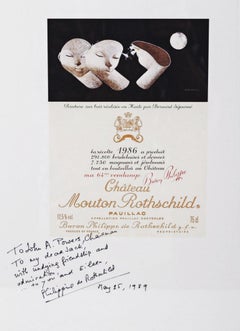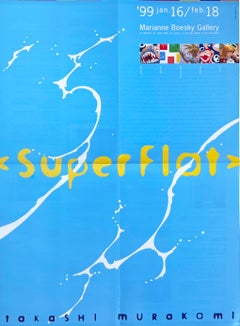Bernard Sejourne Art
Haitian, 1947-2005
Born on November 20, 1947, in Port-au-Prince, Bernard Séjourné began studying art formally after graduating from high school. Painter and sculptor were the best-known artists of the school of art known as the School of Beauty, which honors women. His work depicts beauty, elegance, and grace. His themes were mostly women, and flowers sometimes landscapes. Séjourné liked to paint on large surfaces of Masonite in acrylic to heighten the effect of movement, which he created by his use of fluid lines. His colors range from cool to tropical. "Sejourné's mastery of space and volume create near-abstract works of referential elements." (Peintres Haitiens , Gerald Alexis, Editions Cercle d'Art, 2000.) Séjourné exhibited at Calfou and the Esso Salon in Port-au-Prince in 1965; he participated in the Festival of Black Art held in Dakar in 1956, in Montreal Expo in 1957, at the French Institute of Haiti in 1972. Haitian art collectors have highly valued his work. Since his recent death, he has become one of the highly sought-after collectibles. Baron Philippe de Rothschild commissioned one of his paintings and used it on the label of his 1986 vintage Chateau Mouton-Rothschild, Pauillac wine bottle.to
1
Overall Width
to
Overall Height
to
1
1
1
1
1
1
1
9,989
2,754
1,378
1,375
1
1
Artist: Bernard Séjourné
Chateau Mouton Rothschild Wine Label Signed & inscribed Philippine de Rothschild
By Bernard Séjourné
Located in New York, NY
Bernard Séjourné
Chateau Mouton Rothschild Wine Label (Hand Signed & Inscribed), 1989
Wine Label Print
Signed “To John A. Powers, Chairman, ...
Category
1980s Abstract Bernard Sejourne Art
Materials
Lithograph, Offset
Related Items
Takashi Murakami 'Superflat' exhibition poster (vintage Takashi Murakami)
By Takashi Murakami
Located in NEW YORK, NY
Takashi Murakami Superflat Exhibition Poster 1999:
Rare 1990s exhibit poster designed by Murakami and published by Marianne Boesky Gallery New York...
Category
21st Century and Contemporary Pop Art Bernard Sejourne Art
Materials
Lithograph, Offset
$375 Sale Price
31% Off
H 22 in W 17 in D 0.01 in
Stones III (~22% OFF LIST PRICE)
Located in Kansas City, MO
Avraham Inlender
Stones III
Color Offset Lithograph
Year: 2003
Size: 5.9 x 5.5 inches (15 x 14 cm)
Signed in pencil
COA provided
Avraham Inlender (1932–2003) was a Polish-born arti...
Category
Early 2000s Abstract Bernard Sejourne Art
Materials
Lithograph, Offset
VASARELY CENTER NY 1978 Vintage Op-Art Poster, Geometric Abstract, Gold Black
By Victor Vasarely
Located in Union City, NJ
VICTOR VASARELY
VASARELY CENTER NY
Vintage original vintage Op-art poster published by VCNY (Vasarely Center New York), New York, 1978.
Poster size - 32 x 24 inches, unframed, unsi...
Category
1970s Op Art Bernard Sejourne Art
Materials
Offset, Lithograph
Pierre Soulages - Original Lithograph
By Pierre Soulages
Located in Collonge Bellerive, Geneve, CH
Pierre Soulages - Original Lithograph
Published in the deluxe art review "XXe siècle"
1970
Unsigned as published
Dimensions: 32 x 24 cm
Pierre Soulages or the "painter of black" as ...
Category
1970s Abstract Expressionist Bernard Sejourne Art
Materials
Lithograph
Keith Haring: Into 1984/Tony Shafrazi Gallery
By Keith Haring
Located in New York, NY
Color offset lithograph. Signed and dated in felt-tip pen and pink ink, lower right. Published by Tony Shafrazi Gallery, New York.
Category
1980s Pop Art Bernard Sejourne Art
Materials
Color, Lithograph, Offset
As I Opened Fire Poster, Triptych
By (after) Roy Lichtenstein
Located in New York, NY
Set of 3 color offset lithographs. The last panel is signed in pencil. Printed by Drukkerij Luii & Co., Amsterdam. Published by the Stedelijk Museum, Amsterdam. This is a reproductio...
Category
1960s Pop Art Bernard Sejourne Art
Materials
Color, Lithograph, Offset
Canadian Post Modern Pop Art Lithograph Vintage Poster Memphis Galerie Maeght
By Jean-Paul Riopelle
Located in Surfside, FL
Vintage gallery exhibition poster.
The Galerie Maeght is a gallery of modern art in Paris, France, and Barcelona, Catalonia, Spain. The gallery was founded in 1936 in Cannes. The Paris gallery was started in 1946 by Aimé Maeght. The artists exhibited are mainly from France and Spain. Since 1945, the gallery has presented the greatest modern artists such as Matisse, Bonnard, Braque, Miró, and Calder. In 1956, Adrien Maeght opened a new parisian venue. The second generation of “Maeght” artists was born: Bazaine, Andre Derain, Giacometti, Kelly, Raoul Ubac, then Riopelle, Antoni Tapies, Pol Bury and Adami, among others.
Jean-Paul Riopelle, CC GOQ (7 October 1923 – 12 March 2002) was a painter and sculptor from Quebec, Canada. He became the first Canadian painter (since James Wilson Morrice) to attain widespread international recognition.
Born in Montreal, Riopelle began drawing lessons in 1933 and continued through 1938. He studied engineering, architecture and photography at the école polytechnique in 1941. In 1942 he enrolled at the École des beaux-arts de Montréal but shifted his studies to the less academic école du Meuble, graduating in 1945.
He studied under Paul-Émile Borduas in the 1940s and was a member of Les Automatistes movement. Breaking with traditional conventions in 1945 after reading André Breton's Le Surréalisme et la Peinture, he began experimenting with non-objective (or non-representational) painting. He was one of the signers of the Refus global manifesto. In 1947 Riopelle moved to Paris and continued his career as an artist, where, after a brief association with the surrealists (he was the only Canadian to exhibit with them) he capitalized on his image as a "wild Canadian". His first solo exhibition took place in 1949 at the Surrealist meeting place, Galerie La Dragonne in Paris. Riopelle married Françoise Lespérance in 1946; the couple had two daughters but separated in 1953. In 1959 he began a relationship with the American painter Joan Mitchell, Living together throughout the 1960s, they kept separate homes and studios near Giverny, where Monet had lived. They influenced one another greatly, as much intellectually as artistically, but their relationship was a stormy one, fueled by alcohol. The relationship ended in 1979. His 1992 painting Hommage à Rosa Luxemburg is Riopelle's tribute to Mitchell, who died that year, and is regarded as a high point of his later work.
Riopelle's style in the 1940s changed quickly from Surrealism to Lyrical Abstraction (related to abstract expressionism), in which he used myriad tumultuous cubes and triangles of multicolored elements, facetted with a palette knife, spatula, or trowel, on often large canvases to create powerful atmospheres. The presence of long filaments of paint in his painting from 1948 through the early 1950s[8] has often been seen as resulting from a dripping technique like that of Jackson Pollock. Rather, the creation of such effects came from the act of throwing, with a palette knife or brush, large quantities of paint onto the stretched canvas.
Riopelle's voluminous impasto became just as important as color. His oil painting technique allowed him to paint thick layers, producing peaks and troughs as copious amounts of paint were applied to the surface of the canvas. Riopelle, though, claimed that the heavy impasto was unintentional: "When I begin a painting," he said, "I always hope to complete it in a few strokes, starting with the first colours I daub down anywhere and anyhow. But it never works, so I add more, without realizing it. I have never wanted to paint thickly, paint tubes are much too expensive. But one way or another, the painting has to be done. When I learn how to paint better, I will paint less thickly."
When Riopelle started painting, he would attempt to finish the work in one session, preparing all the color he needed before hand: "I would even go as far to say—obviously I don't use a palette, but the idea of a palette or a selection of colors that is not mine makes me uncomfortable, because when I work, I can't waste my time searching for them. It has to work right away."
A third element, range of gloss, in addition to color and volume, plays a crucial role in Riopelle's oil paintings. Paints are juxtaposed so that light is reflected off the surface not just in different directions but with varying intensity, depending on the naturally occurring gloss finish (he did not varnish his paintings). These three elements; color, volume, and range of gloss, would form the basis of his oil painting technique throughout his long and prolific career.
Riopelle received an Honorable Mention at the 1952 São Paulo Art Biennial. In 1953 he showed at the Younger European Painters exhibition at the Solomon R. Guggenheim Museum in New York City. The following year Riopelle began exhibiting at the Pierre Matisse Gallery in New York. In 1954, works by Riopelle, along with those of B. C. Binning and Paul-Émile Borduas represented Canada at the Venice Biennale. He was the sole artist representing Canada at the 1962 Venice Biennale in an exhibit curated by Charles Comfort...
Category
1970s Pop Art Bernard Sejourne Art
Materials
Lithograph, Offset
Georg Baselitz, Der Berg - Signed Print from 1993, Neo-Expressionism
By Georg Baselitz
Located in Hamburg, DE
Georg Baselitz (German, b. 1938)
Der Berg, 1991/93
Medium: Color offset print
Dimensions: 100x 63.5 cm
Edition size: Undisclosed (presumably 100-200)
Markings: Hand-signed and dated ...
Category
20th Century Abstract Bernard Sejourne Art
Materials
Offset
$2,384
H 39.38 in W 25.01 in
Red Parrot
By Paul Jenkins
Located in New York, NY
A very good impression of this scarce color lithograph on Arches. Artist's proof, aside from the edition of 65. Signed and dated in pencil. Published by the Martha Jackson Gallery...
Category
1960s Abstract Expressionist Bernard Sejourne Art
Materials
Color, Lithograph
Thistle
By Donald Baechler
Located in Washington, DC
Artist: Donald Baechler
Title: Thistle
Medium: Lithograph
Year: 1999
Edition: 67/75
Sheet Size: 45 1/2" x 22"
Signed: Hand signed and numbered in pencil
Category
1990s Abstract Bernard Sejourne Art
Materials
Lithograph
Untitled
By Sam Francis
Located in New York, NY
A very good impression of this scarce color lithograph on Rives BFK. Signed and numbered 13/50 in pencil by Francis. Published by Editions Daniel Papierski, Paris. From "Papierski Po...
Category
1990s Abstract Expressionist Bernard Sejourne Art
Materials
Color, Lithograph
Poster for Peace
By Robert Rauschenberg
Located in New York, NY
A very good impression of this color offset lithograph with strong colors. Signed, dated and numbered 230/250 in pencil by Rauschenberg. Published by S...
Category
1970s Modern Bernard Sejourne Art
Materials
Color, Lithograph, Offset
Bernard Séjourné art for sale on 1stDibs.
Find a wide variety of authentic Bernard Séjourné art available for sale on 1stDibs. You can also browse by medium to find art by Bernard Séjourné in lithograph, offset print and more. Much of the original work by this artist or collective was created during the 1980s and is mostly associated with the abstract style. Not every interior allows for large Bernard Séjourné art, so small editions measuring 17 inches across are available. Bernard Séjourné art prices can differ depending upon medium, time period and other attributes. On 1stDibs, the price for these items starts at $5,500 and tops out at $5,500, while the average work can sell for $5,500.


